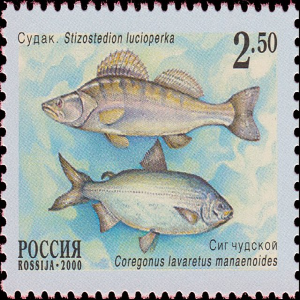Alpine freshwater fish biodiversity assessment: an inter-calibration test for metabarcoding method set up

Accepted: 5 February 2022
Supplementary Materials: 0
HTML: 37
All claims expressed in this article are solely those of the authors and do not necessarily represent those of their affiliated organizations, or those of the publisher, the editors and the reviewers. Any product that may be evaluated in this article or claim that may be made by its manufacturer is not guaranteed or endorsed by the publisher.
Authors
The analysis of environmental DNA (eDNA) by high throughput sequencing (HTS) is proving to be a promising tool for freshwater fish biodiversity assessment in Europe within the Water Framework Directive (WFD, 2000/60/EC), especially for large rivers and lakes where current fish monitoring techniques have known shortcomings. These new biomonitoring methods based on eDNA show several advantages compared to classical morphological methods. The sampling procedures are easier and cheaper and eDNA metabarcoding is non-invasive and very sensitive, allowing for the detection of traces of DNA. However, eDNA metabarcoding methods need careful standardization to make the results of different surveys comparable. The aim of the EU project Eco-AlpsWater is to test and validate molecular biodiversity monitoring tools for aquatic ecosystems (i.e., eDNA metabarcoding) to improve the traditional WFD monitoring approaches in Alpine waterbodies. To this end, an inter-calibration test was performed using fish mock community samples containing either tissue-extracted DNA, eDNA collected from aquaculture tanks and eDNA samples collected from Lake Bourget (France). Samples were analysed using a DNA metabarcoding approach, relying on the amplification and HTS of a 12S rDNA marker, in two separate laboratories, to evaluate if different laboratory and bioinformatic protocols can provide a reliable and comparable description of the fish communities in both mock and natural samples. Our results highlight good replicability of the molecular laboratory protocols for HTS and good amplification success of selected primers, providing essential information concerning the taxonomic resolution of the 12S mitochondrial marker in describing the Alpine fish communities. Interestingly, different concentrations of species DNA in the mock samples were well represented by the relative DNA reads abundance. These tests confirm the reproducibility of eDNA metabarcoding analyses for the biomonitoring of freshwater fish inhabiting Alpine and peri-Alpine lakes and rivers.
Supporting Agencies
European Regional Development Fund (ERDF)How to Cite
PAGEPress has chosen to apply the Creative Commons Attribution NonCommercial 4.0 International License (CC BY-NC 4.0) to all manuscripts to be published.


 https://doi.org/10.4081/aiol.2022.10017
https://doi.org/10.4081/aiol.2022.10017



